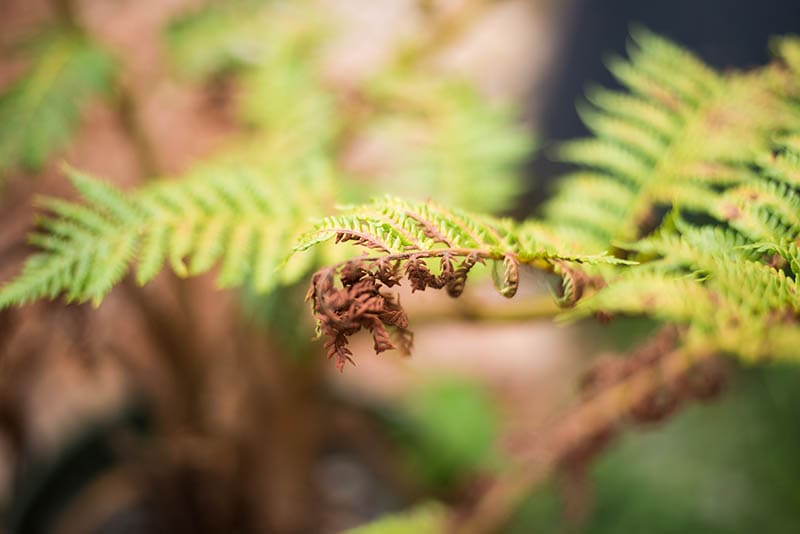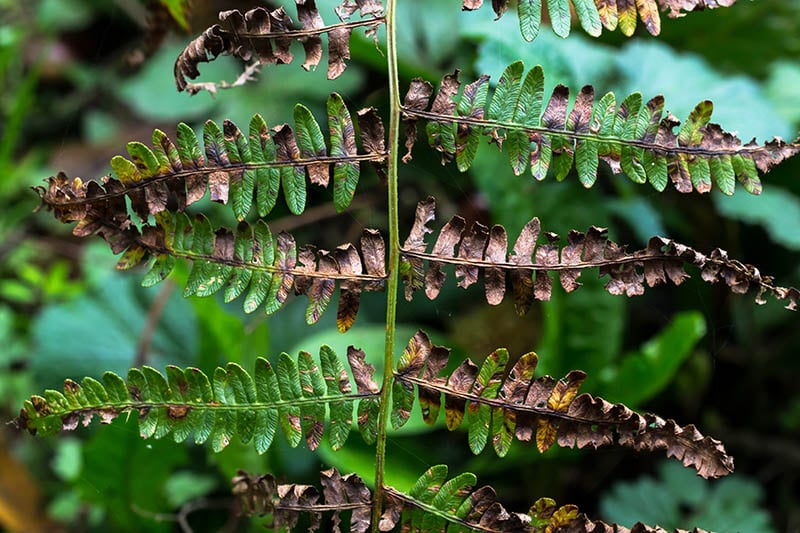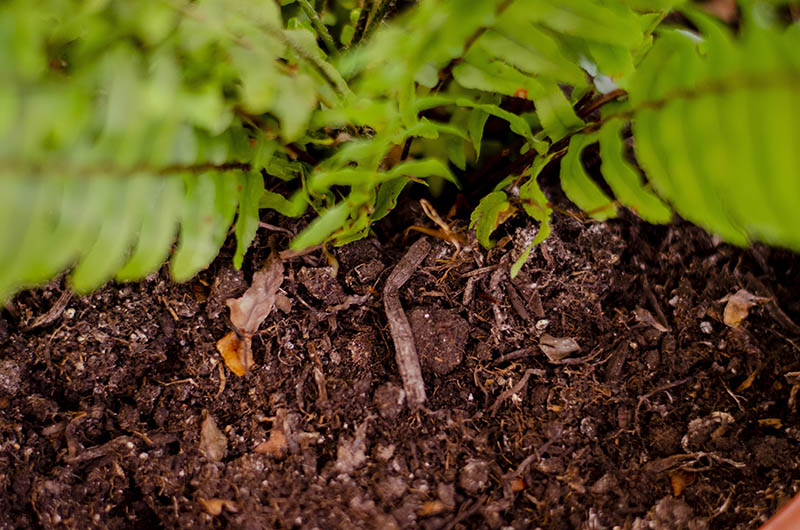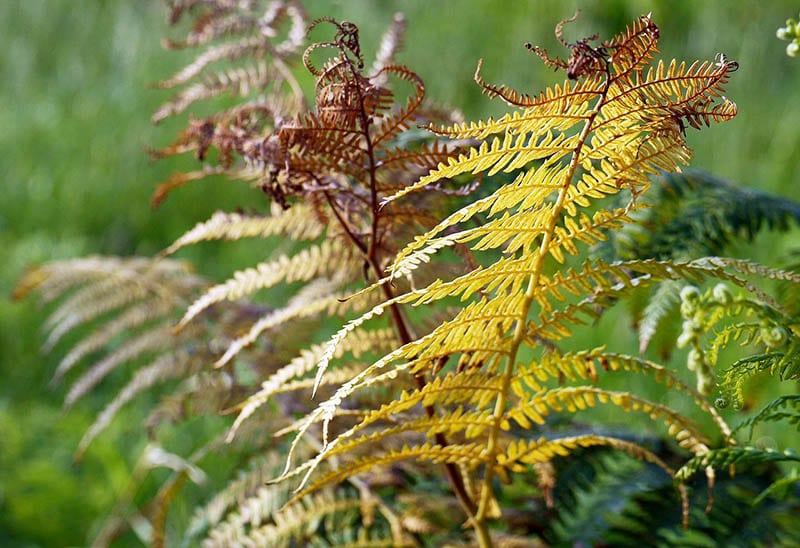Is My Fern Dead? (9 Signs to Look For)
-
Pete Ortiz
- Last updated:

American households have a sweet spot for ferns. They are beautiful, have an impressive lifespan, and can handle tough conditions. However, sometimes, this lovely indoor plant does wither, wilt, turn brown, and develop a bad smell. So, does that mean it’s dead, or not? Well, unless you’re a seasoned gardener, it will be hard to tell!
That’s why we put together a list of typical signs of a dying fern, including brittle fronds, strange odors, dark roots, and more. The good news is—in most cases, all it takes to bring the plant back to life is a little bit of sunlight, pest control, and adequate watering. So, join us, and let’s talk about the most common symptoms and how to treat them!
Fern Care Guide
| Botanical Name: | Tracheophyta |
| Soil Type: | Well-drained, moist, organically rich, loamy |
| Soil PH: | 4.0–7.0 (slightly acidic) |
| Sun Exposure: | Indirect light |
| Watering Requirements: | Low, once in 1–2 weeks |
| Ideal Temperature: | 55–75° Fahrenheit |
| Humidity Levels: | 50–70% (above average) |
| Hardiness Zone: | 4–9 USDA |
| Blooming Time: | Spring to fall |
The 9 Signs to Check if Your Fern Is Dead
1. Have All the Leaves Fallen?

Dead leaves are one of the most obvious signs of a withering tree. But if you just found out that most of the fronds (that’s what the leaves of a fern are called) have fallen, it doesn’t necessarily mean it’s time to get into panic mode. Depending on the species, some die-back can be a normal thing. Yes, we’re talking about deciduous plants and the natural seasonal cycle.
So, do check your fern. Now, most species that are used as houseplants in the States are evergreen and don’t lose foliage in the winter, spring, or any other time of the year. However, many outdoor varieties do turn brown and lose most of the fronds in the early days of fall. If that’s the case, all you have to do is give the fern 6–7 months to start growing back its fronds.
2. The Fronds: Are They Weak and Brittle?
In contrast to most plants on the planet, ferns grow best in partial or full shade. When exposed to direct sunlight for a long period, they will color and turn pale. This also makes the fronds fragile. On the bright side, the sun rarely, if ever, kills the plant. It might look like the fern is not for this world anymore, but it’s actually still kicking. Go ahead and (gently) touch the fronds.
If they are, indeed, brittle and feel like paper, that can be fixed by relocating the pot/container to a different spot. This is important: partial to full shade doesn’t mean the plant will flourish in absolute darkness. It still needs its fair share of light, just not direct exposure. Therefore, even if you move it a bit from the window, that might do the trick. For an outdoor species, you might have to replant it to get more shade.
3. Is the Soil Dry to the Touch?

What does the term “under-watering” mean? It’s when the plant doesn’t get enough water for steady growth and starts to wither. Now, ferns aren’t very thirsty yet they still need their fair share of water. These plants do best when watered once in 1–2 weeks. This changes depending on how hot or cold it is, of course.
What you should do is check on the soil once in a while. The rule of thumb is, if the surface of the soil is dry, it’s time to water it. However, if it’s still a bit soggy, you should wait for a day or two before it soaks all the moisture in. Drought is one of the biggest nightmares for ferns, but they do recover from it as long as the problem is dealt with swiftly.
4. Does the Plant Have a Bad Odor?
Strange smells coming from a plant are never a good sign. But thankfully, that doesn’t necessarily mean your fern is dead in the water. We just covered the side effects of under-watering. Well, overwatering is just as bad and often leads to root rot. This disease takes over the plant when the roots are soaked in moisture and don’t have access to oxygen.
In other cases, soggy soil leads to the development of fungi that target weak roots. You need to deal with this ASAP; otherwise, the disease will spread—quickly. A foul odor is not the only side effect of root rot, though. Yellowing leaves, overly wet soil, and black roots can also be a sign that your fern is being “choked” by bacteria.
5. Are the Roots Dark and Mushy?

When the roots turn black and get all soft and mushy, that could also be a symptom of root rot. To make sure, carefully remove the whole plant from the pot and examine the roots. Next, do your best to remove the soil from the fern roots. Why do that, exactly? Well, the soil might be infected, and you don’t want that anywhere near the already damaged roots. Running water can help get rid of it.
Grab your favorite pruning scissors, make sure they are clean, and trim away all the affected roots. Don’t be afraid to cut out large chunks of the dark and mushy roots. If you don’t eradicate the disease thoroughly, the disease will quickly come back. This is important: if you’re left with very few roots and lots of ferns, remove some of the leaves to ensure growth. Now just buy a new pot, fill it with new soil, and repot the fern.
6. Is the Plant Turning Yellow?
This is a tricky one, as yellow fronds can be caused by a lot of things. The list includes overwatering, under-watering, too much or too little sunlight, low humidity levels, or root rot. But, more often, yellow fronds mean the plant isn’t getting enough nitrogen. Plants receive the primary nutrients—the NPK, or the Big 3—from the soil, not the air.
So, you can control how much nitrogen the fern is fed by using a different fertilizer product. Check the package: it should have a list of the included ingredients. On top of that, you’ll find a fertilizer grade that tells you exactly how much of each nutrient you’ll get. For example, 10–10–10 means the bag has 10% of nitrogen, phosphate, and potash.
7. Are You Noticing Frond Spots?

Ferns are highly resistant to most diseases. However, sometimes, they are attacked by the fungus known as Rhizoctonia Blight. When it takes over the plant, the foliage gets overwhelmed by brown spots (of various forms). The disease is quick to spread, slowly squeezing the life out of the fern. So, how do you battle this destructive fungus?
We recommend replanting the fern in a pasteurized potting mix. And to be 100% sure the disease won’t come back, apply a healthy dose of fungicide. A quick note: if you’re seeing brown tips instead of spots (leaf burn), that means the soil is overly fertilized. To fix that, cut on the fertilizer supplies for a while until the fern gets back on its feet. Crinkled frond tips are caused by the same issue.
8. Do You See Bugs on or Around the Plant?
Ferns aren’t nearly as vulnerable to pests as some of the other popular houseplants. But, they can still be a threat. The two pests that you need to be worried about are spider mites and scale insects. Your first thought is probably to go for a pesticide, but that might not be such a good idea. Ferns aren’t big fans of insecticide spray, and you may end up injuring the fronds.
Instead, try picking the bugs by hand or spraying some water to push them away. Also, make sure the temperature in the room doesn’t go over 75°F and that the humidity levels stay in the 50–75% range. This way, you’ll ensure steady growth and make the plant stronger against pests, bacteria, and fungi.
9. Physical Damage: Are There Any Signs?

Just like any other plant, ferns aren’t immune to physical damage. And, oftentimes, it’s not very easy to spot. So, if you feel like your fern is dying because it looks withered and yellow or the fronds are brittle, that might be a sign of physical injuries. Maybe you accidentally dropped the pot to the floor a while ago or hit one of the fronds with a heavy object.
Careless pruning (when you’re cutting deep into the flesh) can also be causing this. To save the fern, cut out the affected parts. Otherwise, the plant will keep sending nutrients to the dead parts instead of feeding the healthy fronds, which is not what you want here.
Can You Revive a Dying Fern Plant?
This largely depends on whether the rhizomes and the roots are damaged/rotten beyond salvation, or not. Even if most of the roots are destroyed by diseases, bacteria, or poor growing conditions, you can still revive the fern as long as there are some healthy bits in the soil. Buy a new pot, fill it with premium-quality potting mix, and carefully move the undamaged roots over.
As mentioned, ferns are pretty tough and can survive without a single frond: it’s the roots that matter. Also, make sure you learn from your mistakes and follow our guide on how much water and sun these houseplants need so you don’t have to deal with rotten roots all over again.

How Long Do Ferns Last?
Ferns are one of the most long-lived plants out there. And, while they do much better outdoors, in natural environments, if you take care of the plant, it will stick around for many years, if not decades. Yes, it all comes down to proper maintenance. So, take your time and study the fern’s preferences in watering, sun exposure, temperature, humidity, and soil/fertilizer.
Did you know that there are more than 10,000 fern species on the planet? These plants have been around for 350+ million years and are still kicking! And every single fern species has a different lifespan and grows best in different conditions. For example, the Boston ferns are known to live for up to 100 years (when cultivated as a houseplant).
Conclusion
Ferns are low-maintenance, highly adaptive, and easy-to-grow plants. You’re not required to buy any expensive formulas or potting mixes for them to flourish. You do, of course, have to keep your eye on the fronds for any signs of pest infestation, root rot, overwatering, and more. The key takeaway here is to be careful and follow the guidelines for growing a fern.
Quite often, it’s the owner that makes the plant wither because they add too much water or fertilizer or expose it to more sunlight than the houseplant can handle. That’s why it’s so important to learn about the most common signs of a dying fern. The more you know, the easier it will be to save the plant!
- Org – Fertilizer 101: The Big 3
- Gov – A Homeowner’s Guide to Fertilizer
- Extension.Wisc.Edu – Root Rot On Houseplants
- UCANR.Edu – Agriculture, Rhizoctonia Blight
- Com – Boston Fern Lifespan
- Edu – Fern Diseases
- UMN.Edu – Growing Ferns Indoors
- Clemson.Edu – Indoor Ferns
- UGA.Edu – Growing Ferns
- Com – Fiddlehead Fern Health Benefits
Featured Image Credit: zazasal, Shutterstock
Contents


